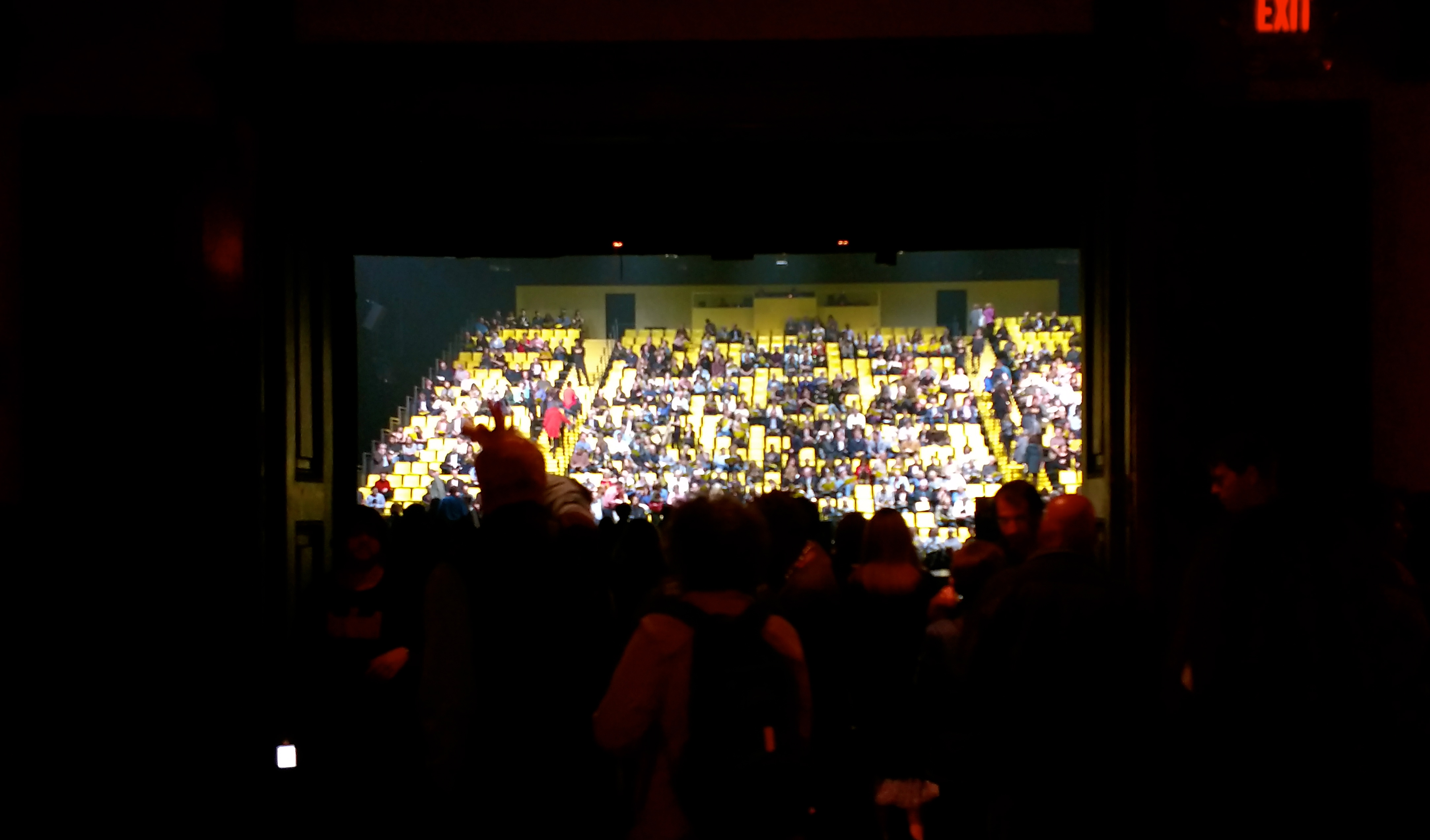The first image you see at Eugene O’Neill’s THE HAIRY APE at the Park Avenue Armory are rows and rows of seats, ready to absorb the arriving audience into a yellow, Borg-like mass. The implication is that, once we are seated, the play will redound on us with its expressionistic theme: society as a machine of which each of us, by virtue of social type or role, is a cog or a wheel. In the humdrum course we are so assimilated to the mechanism that this is scarcely noticeable. It is the task of Expressionism to expose its workings from the perspective of one who sees it for what it is, who becomes conscious of him or herself as a type playing a role and breaks, behaviorally, from it. The errant member is, usually, smashed like a loose screw in the gears, but in the process a truth about social conformity and forced assimilation is reified and seen.
Richard Jones’s production is in every respect brilliant. Not only does the seating implicate the audience (it’s like taking one’s place in a beehive), but the designer Stewart Lang has produced a great conveyer belt of a set, the scenes moving in and out like products on an assembly line. The actors, as the ground moves, walk and go nowhere, like the social denizens they represent. Mimi Jordan Sherin, the lighting designer, lays down illuminated corridors in the cavernous hall, the architecture of which is exposed, on the back wall, to evoke New York circa 1922, when the play was written. Frozen vignettes, like social realist murals, are created with the actors by the choreographer Aletta Collins, “living pictures” bulging with the incipient energy of working class musculature.
The one who breaks from the machine goes by “Yank,” a man so fully immersed in type (a brute) and role (a ship’s stoker), that he isn’t, when asked, sure of his real name. He sees things for what they are when Mildred, the attractive daughter of a steel magnate, recoils from him on sight, calling him, in words that stick, “a hairy ape.” Bobby Cannavale’s Yank emerges, at that moment, like an injured moth from the chrysalis, damaged, beyond the chance of a full life. From then forward he is a social rebel, refuses to wash, lashes out, lands in jail (a caged animal), plots to dynamite a steel mill. He is hulking, impulsive, and doomed, but he sees the fact of the system that made him. No one else breaks from the mass consciousness; not the socialist workers with their identical pamphlets; not the parade of indistinguishable churchgoers; not his fellow stokers, their races, accents and nationalities merging in cacophony and their dress to uniformity.
Cannavale’s Yank comes face to face at the end with an image of the creature named in Mildred’s epithet, a caged gorilla at the zoo (exquisitely aped, in a convincing costume, by Phil Hill), whom he alternately torments and cajoles. It’s a performance that arouses sympathy despite Yank’s sadism. Cannavale understands that its source is self-loathing activated by rejection. Mildred (winningly played by Catherine Combs) was no one to him, yet her insult both awakened and mortally wounded him. Love, in the stultifying machine that Yank apprehends, has no place (it is hard, several times during the production, not to think of King Kong, which would come to the movies eleven years later). In the interplay between human and actual ape, with an open cage and a final plea, Yank’s story ends. Ours, leaving our identical yellow seats – the same color as the cage onstage – continues.
THE HAIRY APE runs through April 22 at Park Avenue Armory. Click here for information.
